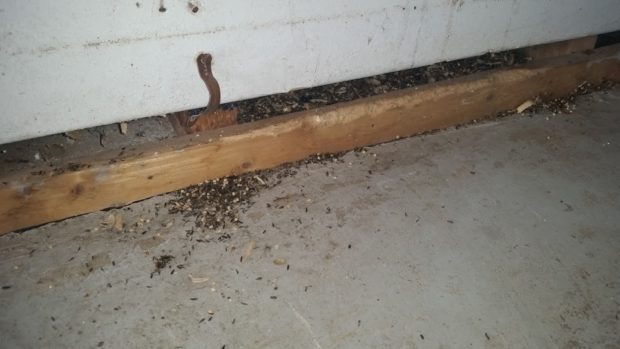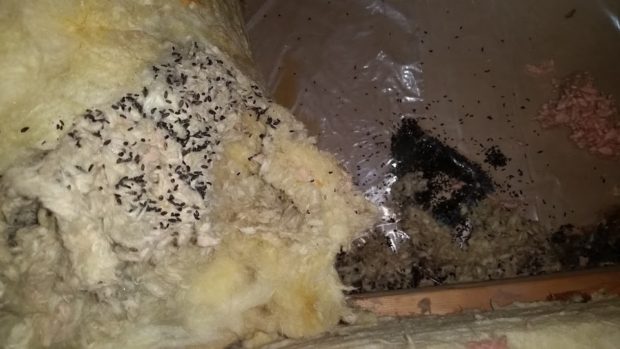Mice are one of the most common pests that infest Burlington homes. Many homeowners have no idea that mice have taken up residence inside their walls and attic until they see one scurry across the floor or hear scratching and chewing from behind the drywall.
When it comes to mouse control the general rule is that the activity you see or hear is only a fraction of the total. Homeowners rarely, if ever, have just one mouse living inside the house. Mice are social animals and you can bet that for every mouse you see inside the home there are dozens more tucked away in hard to access places elsewhere.
Mice behaviour and populations are driven in large part by the availability of food and shelter. It’s fairly understood that attics, walls and basements make ideal nesting nest locations for mice, but many Burlington homeowners are less aware of what mice eat and why their diet is so important when it comes to control.
The mouse diet
Mice are omnivores, meaning they will eat just about anything they can find. The bulk of their diet is made up of seeds, nuts and grains but they are also opportunistic and will eat human food and even each other if times get lean.
Being at the bottom of the food chain, mice don’t like to travel far distances from their nests. They make their home in close proximity to reliable food sources and will spend most of their lives within a 25 foot radius.
Mice have very active metabolisms, eating continuously throughout the day so they need consistent access to food. One of the ways that mice secure access to food is by hoarding it in locations close to their nests – attics and walls are preferred. Food storage is especially important in northern climates where harsh winters can make food scarce for months at a time.

Mouse droppings and bird seed scattered on a garage floor.

A closer look. Bird seed behind a wall inside a garage.
Female mice are capable of giving birth every three weeks and litters can contain as many as 12 babies. When well fed, mice give birth to larger and healthier litters of babies meaning the size and growth of mouse populations are directly related to their ability to find and store food.
Removing and controlling mice
When it comes to removing and controlling mice in your house, eliminating food sources can go a long way. Skedaddle Humane Wildlife Control technicians frequently discover mouse food caches in Burlington attics and walls.
Below are some common household food sources:
- Bird Seed. Many homeowners enjoy attracting birds to their yards with feeders but don’t realize that the seed that falls to the ground below is fair game for clever mice.
- Grass and Garden Seed. That bag of grass seed in the corner of the garage could be helping the mice in your house survive winter.
- Pet Food. Mice are nocturnal and will make a habit of raiding pet food dishes and storing it away out of site.
- Pantries. If you have mice inside your home, you can help keep their populations in check by storing pantry items in mouse proof containers and securing food waste.

Attics are a favorite mouse nest location. These droppings indicate intense mouse activity.
Skedaddle Humane Wildlife Control
Removing obvious food sources is an excellent first step in keeping mouse populations at bay but it’s by no means a guarantee of eliminating the problem. Beyond human sources of food, mice are also able to sustain themselves on seeds and nuts that fall from trees found on your property or your neighbors.
If you’ve tried removing mouse food sources from your home but can’t seem to eliminate your infestation all together then it might be time to call professional mouse removal specialists.
Skedaddle Humane Wildlife Control has been servicing Burlington since 1989. Our proven mouse removal and exclusion techniques are sure to eliminate your mouse infestation.
Call us today to book an inspection – 905 858-3379!


